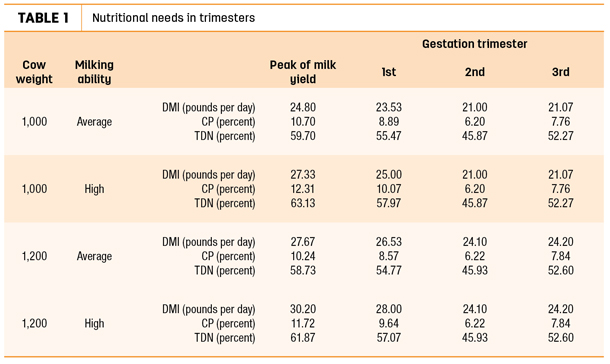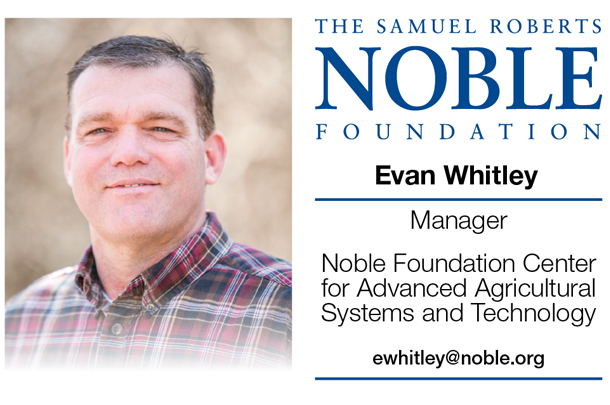For the most part, the actual contemplation occurs in the fall, especially for spring-calving herds, but is unquestionably based upon management decisions and overall philosophies that occurred throughout the growing season.
As a general rule of thumb, implementation should begin with an understanding of whether protein or energy is forecasted as the most limiting nutrient. This will determine whether a supplemental feeding program is even necessary, the “type” of feed supplement (i.e., protein versus energy) to evaluate and a purchasing decision based upon most effectively meeting expected nutrient deficiencies.
Breeder or range cubes are commonly used by cow-calf producers to meet nutritional deficiencies. However, it is important to note that just because they are all stacked beside each other doesn’t mean they are all the same. Differences in stability, overall nutrient content and wastage will occur based upon the technique and degree of processing, cube size and individual ingredients included.
If, indeed, protein is deemed most limiting, the single biggest factor in the decision-making process is the availability of a high-protein cube (i.e., 38 percent), the overall energy content of this cube and price. Many producers think that because high energy is on the label, there is a big difference in the energy content of a lower-protein cube (i.e., 20 percent).
However, if the higher-protein cube contains cottonseed or soybean meal as a source of protein, there should be very little difference in energy content between the two feeds. It is always a good idea to ask your feed dealer what the total digestible nutrients are for all feeds you expect to purchase, as this information is not required on the tag. It will help you compare products.
Liquid protein tubs (e.g., blocks, syrup, tanks, etc.) are also very popular and can be used to balance the nutrient deficiency of a cow herd. The protein source and the overall amount included in the feed is important.
Non-protein nitrogen sources, such as urea and biuret, are readily available to rumen microbes, yet keep in mind, energy is also needed before being a beneficial source of protein to the host animal. Inclusion of non-protein nitrogen at very high levels can lead not only to greater nutritional inefficiency but, in some cases, toxicity.
Therefore, intake should be monitored very closely and compared to feeding recommendations, especially for liquid forms of these feeds, to mitigate overconsumption and undue feed costs.
Alternative feedstuffs (i.e., byproducts, co-products) are gaining popularity as feed sources for mature cows, primarily due to initial cost. Although effective in many instances, there are challenges associated with their implementation that producers must consider for their particular situation.
First, these feeds result from further processing techniques and are not formulated feeds. Therefore, they can have potential negative attributes such as low palatability, nutrient imbalance and price/nutrient volatility due to seasonal supply when fed by themselves.
Second, there are potential physical characteristics (i.e., physical form, pellet size, binding properties) associated with these feeds that could determine whether they need an intake limiter, can be fed on the ground, and how many “fines” to expect.
Feed manufacturers often use these feeds when formulating “balanced” feedstuffs, and there are others who specialize in “blending” these feeds. Thus, there are means to offset these challenges if you are aware of them up-front.
Forage and hay characteristics
Any supplemental feeding program will be based upon the type, availability and quality of the roughage source. An estimate of roughage quality is relatively easy to obtain by laboratory analysis (i.e., hay, grab sample, fecal) and will identify the forage contribution to meet protein and energy needs as a baseline in developing a supplement program.
Although forage quality is important, mature cows can get through the winter with decent-quality roughage (i.e., hay, stockpiled introduced pasture or dormant native grass) if there is enough and the cows are in the right physiological stage and body condition.
In general, if roughage quantity is inadequate or limiting, a lower-protein cube/byproduct can be used to substitute this inadequacy, if fed in relatively high amounts, and is not cost-prohibitive.
However, if forage quantity is not a concern, an all-natural, high-protein cube/pellet or liquid protein will be most effective at meeting nutrient deficiencies as well as stimulating forage intake. Far too often, we try to make up for a lack of forage management with a feed sack. It is always better to have too much forage than not enough.
Production stage
The statement, “Feed them protein until they calve, then start feeding them energy because they need more energy after they calve,” is true. However, their protein needs also increase after parturition. In fact, according to the Nutrient Requirements of Beef Cattle (NRC 1996), energy requirements increase by about 15 percent for average milking cows after they calve, and protein requirements increase by more than 30 percent (Table 1).

Therefore, a good-quality source of protein (assuming price is factored in) can be used throughout the feeding season if it makes sense to do so.
Practically speaking, if you check your cattle every day, cubes are most likely the most plausible option. If you only see them once or twice a week and have adequate pasture, generally speaking, a higher-protein cube (fed two to three times per week) or liquid supplement will fit your situation better.
More in-depth questions need to be asked and answered before a definitive answer can be reached for your particular situation.
With that said, it has been my experience that if animal condition, forage quantity and labor are not limiting factors, a high-quality 38 percent cube is going to make more economic sense most of the time.
This is primarily due to protein being the first limiting nutrient in most of the scenarios. If, indeed, lack of protein is the problem, then it stands to reason 38 percent cubes are going to be the most economical choice – unless 20 percent cubes are almost half the cost and the energy content is similar.
In most cases, and with a little creativity, any of the feeds listed can be used under normal circumstances. In extreme cases, when forage quantity or quality is very low or animal condition is very poor, it does become extremely difficult to implement a cost-effective feeding program regardless of the feed attributes due to the amount the cattle have to consume in order to meet their nutrient deficiency. In these situations, what to feed becomes secondary to alleviating what caused the situation.
I have heard the comment numerous times, “You can’t starve a cow to make a profit,” which is very true and an important concept to keep in mind. However, an equally important concept to remember is not to drain profit out of an operation by implementing a poorly thought-out feeding program. ![]()
PHOTO: Your options for delivery of supplemental feeds depends in part on how frequently you are seeing your cattle. Photo courtesy of Noble Foundation.







